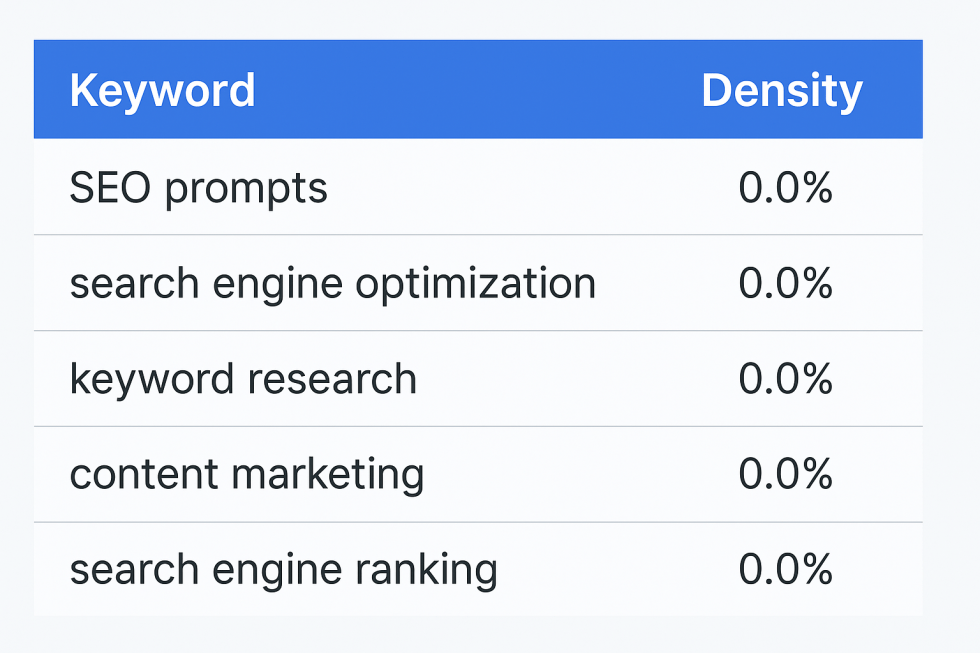
Does Clean Code Improve SEO? A Web Designer’s Perspective on Semantic HTML, Performance, and Minimal Bloat
Clean code shapes how search engines interpret and rank a website by enforcing clarity, structure, and efficiency at the markup level. In this guide, you’ll discover why readable, maintainable code matters for SEO, how semantic HTML and lean markup boost crawlability and speed, and how BKThemes integrates these principles into web design services that drive traffic and conversions. We’ll cover definitions, mechanisms, and benefits of clean coding practices, dive into performance-driven markup and minimal bloat, explore real business outcomes, and explain why partnering with BKThemes ensures an SEO online presence.
What Is Clean Code in Web Design and Why Does It Matter for SEO?
Clean code in web design refers to well-structured, consistent, and efficient HTML, CSS, and JavaScript that prioritize readability, maintainability, and semantic clarity. By using standardized naming, proper indentation, and eliminating redundancy, this approach reduces parsing errors and improves search engine comprehension, directly enhancingSEO-web-development-feed/"> indexation and ranking potential .
How Do Readability and Maintainability of Code Affect SEO?
Readable code supports faster debugging and seamless updates, which keeps your site fresh and compliant with evolvingSEO-web-development-feed/"> SEO standards . Maintainable markup enables developers to implement on-page optimizations—such as meta adjustments and structured data updates—without risk of errors that can disrupt crawlability or user experience. As search engines favor pages with consistent, error-free code, clear markup translates into improved visibility.
What Are the Key Principles of Clean Code for Web Designers?
Clean code follows four core principles :
-
**Consistency **– Uniform naming conventions and style guides prevent confusion.
-
**Modularity **– Breaking code into reusable components reduces duplication.
-
**Readability **– Logical indentation and comments make structure obvious.
-
**Efficiency **– Removing unused styles and scripts minimizes page weight.
These principles promote robust, scalable websites that align with SEO best practices and lower maintenance overhead.
How Does Clean Code Relate to Semantic HTML and Structured Data?
Clean code and semantic HTML work hand in hand: using , , , and elements explicitly communicates content hierarchy to search engines. When semantic tags pair with structured data (JSON-LD or microdata), bots can extract entities and attributes more reliably, leading to enhanced rich snippets and knowledge graph features that driveSEO-web-development-feed/"> click-through rates .
The Impact of Semantic HTML on SEO
Semantic HTML, by using tags like , , and , helps search engines understand the structure and meaning of web content. This leads to improved indexing and the potential for rich snippets, which can increase click-through rates from search results.
W3C, HTML5: A vocabulary and associated APIs for HTML and XHTML (2014)
This research supports the article's claims about the importance ofSEO-techniques/"> semantic HTML in improving search engine understanding and performance.
How Does Clean Code Directly Improve SEO Performance?
Clean code improvesSEO-web-development-feed/"> SEO performance by optimizing how search engines crawl, index, and rank web pages through streamlined markup, faster page speed, and mobile readiness that align with ranking algorithms.
How Does Clean Code Enhance Crawlability and Indexing by Search Engines?
Clean, semantically structured markup reduces parsing complexity and server requests, allowing search engine bots to navigate a site more efficiently. Removing redundant wrappers and inline scripts ensures that crawlers focus on meaningful content, which increases the likelihood ofSEO-techniques/"> comprehensive indexation and accurate content categorization.
Why Is Page Speed and Core Web Vitals Optimization Crucial for SEO?
Page speed and Core Web Vitals (Largest Contentful Paint, First Input Delay, Cumulative Layout Shift) are direct ranking signals. Efficient CSS loading, deferred JavaScript, and optimized image delivery contribute to fast loading times and smooth user interactions. By writing concise, non-blocking code, pages deliver content swiftly—boosting engagement metrics that search engines reward inSEO-expires-headers-improve-page-speed/"> page speed .
Page Speed and Core Web Vitals
Page speed and Core Web Vitals (LCP, FID, CLS) are crucial ranking factors. Techniques like efficient CSS loading, deferred JavaScript, and optimized image delivery contribute to faster loading times and smoother user interactions, which search engines reward. For more information on why speed should be your top priority, check why speed should be your top priority .
Google, Core Web Vitals (2024)
This information aligns with the article's discussion of how clean code andSEO-techniques/"> performance-driven markup directly improve SEO performance.
How Does Clean Code Support Mobile Responsiveness and Mobile-First Indexing?
Mobile-first indexing means Google primarily uses the mobile version of a page for ranking. Clean code facilitates responsive design through well-organized CSS media queries and flexible layout components. Eliminating unnecessary code bloat reduces resource load on mobile devices, ensuring a consistent user experience across screen sizes that aligns with mobile ranking criteria .
What Role Does Semantic HTML Play in Boosting SEO?
Semantic HTML elevates SEO by explicitly defining content meaning, structure, and relationships, which improves entity recognition, accessibility, and the potential forSEO-web-development-feed/"> rich results in search.
Which Semantic HTML Elements Improve Search Engine Understanding?
Core semantic elements include :
-
<header> for introductory content and site branding
-
<nav> for primary and secondary navigation links
-
<article> for standalone content pieces
-
<section> for thematic grouping within articles
-
<aside> for related or tangential information
-
<footer> for closing content and metadata
Using these tags creates a clear document outline that search engines parse to determine content hierarchy andSEO-techniques/"> relevance .
How Does Semantic Markup Enable Rich Snippets and Entity Recognition?
When semantic tags wrap key information—such as , , or —it signals to search engines the nature of content. Coupled with structured data (Schema.org , , ), this markup empowers Google to surface rich snippets like article thumbnails, event times, orSEO-strategies-how-to-enhance-your-online-presen/"> organizational details that enhance visibility and click-through rates.
What Are Best Practices for Implementing Semantic HTML in Web Design?
Follow these guidelines when applying semantic HTML:
-
Use tags according to meaning, not styling needs
-
Avoid <div> overuse; replace with semantic equivalents
-
Ensure ARIA roles supplement, not replace, HTML semantics
-
Nest content logically—headings (<h1>–<h6>) should follow a single outline
-
Validate markup against W3C standards to prevent errors
Consistent implementation of these practices reinforces content clarity and accessibility while supporting SEO.
How Does Performance-Driven Markup and Minimal Bloat Affect SEO?
Performance-driven markup and minimal bloat optimize resource delivery, reduce server load, and preserve crawl budget, all of which contribute to higher search rankings .
What Techniques Optimize Page Speed Beyond Basic Compression?
Beyond Gzip compression, advanced techniques include web development :
-
**Critical CSS inlining **– Embed above-the-fold styles directly in <head> for instant rendering.
-
**Resource preloading **– Hint browsers to fetch key assets (fonts, scripts) early.
-
**Lazy loading **– Defer offscreen image and iframe loading until needed.
-
**Code splitting **– Break large JavaScript bundles into page-specific chunks.
Implementing these strategies reduces Time to Interactive and improves user engagement metrics.
How Does Minimal Code Bloat Improve Crawl Budget and Server Response?
Minimal bloat means fewer HTTP requests and lighter payloads, which accelerates server response times and lowers bandwidth consumption. Search engine crawlers have limited time and resources per site; lean markup ensures bots index more pages per crawl session, leading to better coverage and up-to-dateSEO-techniques/"> indexation.
Why Is Efficient JavaScript and CSS Important for SEO?
Efficient front-end code prevents render-blocking delays and reduces DOM complexity, which enhances both load times and interactivity . When JavaScript and CSS files are minified, tree-shaken, and loaded asynchronously, content appears faster and core web vitals improve—factors that search engines measure when ranking pages.
How Does Clean Code Influence Business Outcomes Through SEO?
Adopting clean code practices yields tangible business benefits by lowering maintenance costs, improving user satisfaction, and driving higher conversion rates.
How Does Clean Code Reduce Maintenance Costs and Improve Scalability?
Clean, modular code promotes reuse and simplifies updates, cutting development hours and preventing costly regressions. Standardized component libraries and style guides enable teams to scale features without rewriting existing modules, ensuring consistent performance and faster time-to-market for new functionalities .
In What Ways Does Clean Code Enhance User Experience and Conversion Rates?
By prioritizing semantic structure and performance-driven markup, clean code delivers faster, more accessible pages that keep visitors engaged. Improved navigation, clear content hierarchies, and reliable interactive elements foster trust and guide users smoothly through conversion funnels , boosting form submissions, purchases, and other key actions.
What Case Studies Demonstrate Clean Code’s Impact on SEO and ROI?
| **Client** | **Challenge** | **Outcome** |
| Retail Startup | Slow load times, high bounce | 45% faster LCP, 30% increase in organic traffic |
| Corporate Blog | Unstructured content, no rich snippets | Featured snippets in 12 search queries, 25% CTR lift |
| E-commerce | Redundant scripts, poor mobile UX | 60% reduction in JS payload, 20% uplift in mobile conversions |
Each case validated that streamlined markup and semantic HTML lead to measurable gains in traffic, engagement, andSEO-techniques/"> revenue .
Why Should Businesses Choose BKThemes for SEO Web Design and Development?
BKThemes leverages deep expertise in clean code, semantic HTML, and performance-driven markup to deliver sites built for visibility, speed, and conversion, ensuring your digital investment drives sustained business growth .
How Does BKThemes Integrate Clean Code and Semantic HTML in Their Services?
At BKThemes, every project begins with a code audit and style guide aligned to W3C standards. Our designers map content structure to semantic elements and embed Schema.org annotations, creating a machine-readable architecture that search engines prioritize.
What Performance-Driven Markup Strategies Does BKThemes Use to Boost SEO?
Our development team implements critical CSS inlining, deferred script loading, and code splitting to optimize Core Web Vitals. By minifying assets and leveraging HTTP/2 and CDN strategies, BKThemes ensures pages load in under two seconds on average.
How Can Businesses Inquire About BKThemes’ SEO Friendly Web Solutions?
To explore how BKThemes can transform your site with clean code and high-impact SEO, visit <a href="https://bkthemes.design/product/custom-coding or schedule a free consultation. Our experts will assess your current codebase, recommend improvements, and outline a roadmap to higher rankings and conversions.
What Are Common Questions About Clean Code and SEO?
Below are the most frequent concerns businesses have when evaluatingSEO"> code quality and SEO readiness .
Does Clean Code Really Improve SEO?
Yes, clean code directly improves https://bkeary1967.wordpress.com/2025/02/23/wordpress-vs-static-html-which-one-is-better-for-your-website/[SEO](https://bkthemes.design/seo) by enhancing crawlability, accelerating page speed, enabling semantic clarity, and reducingSEO-techniques/"> technical errors —each a key ranking factor for search engines.
How Can Businesses Assess the Quality of Their Website’s Code?
Companies can use tools like Lighthouse, WebPageTest, and W3C Markup Validator to measure performance metrics, detect errors, and verify semantic structure, identifying areas where code cleanup will deliverSEO-techniques/"> SEO gains .
Why Is Valid HTML Important for Search Engine Rankings?
Valid HTML ensures that browsers and bots interpret content consistently without rendering issues. When pages adhere to HTML specifications, search engines can extract and index information more reliably, which supports stable rankings .
How Does Clean Code Affect Website Performance and User Engagement?
By eliminating unnecessary scripts and optimizing assets, clean code reduces load times and improves interactivity. Faster, error-free pages keep visitors engaged longer, lower bounce rates, and increase the likelihood of conversions .
What Are the Signs of Poor Code That Hurt SEO?
Indicators of harmful code include nested inline styles, deprecated tags, unminified assets, missing alt attributes, and broken markup. These issues lead to slower load times, crawl errors, and poor accessibility, all of which undermine search visibility .
Clean code represents a foundational shift from ad-hoc development to disciplined engineering that directly drives SEO, user satisfaction, and business growth. By embracing [SEO](https://medium.com/@brian_27980/why-website-breadcrumbs-are-important-for- rel="dofollow noopener" target="_blank">semantic HTML, performance-driven markup, and minimal bloat, you set the stage for higher rankings, richer search features, and sustainable ROI. Partnering withSEO-tips/"> BKThemes ensures your site is built on this proven methodology, delivering lasting value in search and beyond.
Why Is Valid HTML Important for Search Engine Rankings?
Valid HTML ensures that browsers and bots interpret content consistently without rendering issues. When pages adhere to HTML specifications, search engines can extract and index information more reliably, which supports stable rankings.
How Does Clean Code Affect Website Performance and User Engagement?
By eliminating unnecessary scripts and optimizing assets, clean code reduces load times and improves interactivity. Faster, error-free pages keep visitors engaged longer, lower bounce rates, and increase the likelihood of conversions.
What Are the Signs of Poor Code That Hurt SEO?
Indicators of harmful code include nested inline styles, deprecated tags, unminified assets, missing alt attributes, and broken markup. These issues lead to slower load times, crawl errors, and poor accessibility, all of which undermine search visibility.
Clean code represents a foundational shift from ad-hoc development to disciplined engineering that directly drives SEO, user satisfaction, and business growth. By embracing semantic HTML, performance-driven markup, and minimal bloat, you set the stage for higher rankings, richer search features, and sustainable ROI. Partnering with BKThemes ensures your site is built on this proven methodology, delivering lasting value in search and beyond.
📧 Stay Updated
Get the latest web development tips and insights delivered to your inbox.




